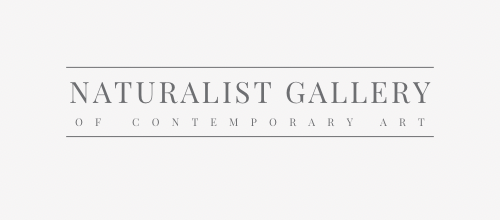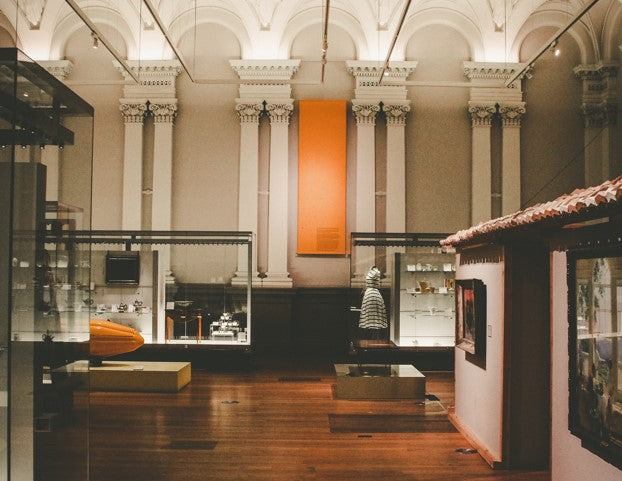You've created a body of work you're happy with, and now you need a place to show it. Any artist's next question would be:
Where can I display my art?
From traditional approaches, like retail galleries, co-op galleries, rental galleries, non-profit galleries and museums, to newer alternative approaches like pop-ups, open studios, "hacking" art fairs, street exhibitions, and other innovative spaces, artists have plenty of options.
Traditional galleries offer a conventional path, while alternative exhibition approaches provide unique opportunities for artists to showcase their work. In this article, we'll delve into both traditional and alternative exhibition approaches, helping artists make informed decisions based on their needs, goals, and artistic vision.
I. Traditional Exhibition Approaches:

-
Retail or Commercial Galleries: Retail galleries aim to sell and promote artwork while taking a commission on sales. These spaces cater to established artists and typically charge a commission of 40 to 50 percent. Artists seeking representation and exposure in the commercial art market often consider retail galleries.
-
Co-op Galleries: Co-op galleries are run by artists themselves. Members exhibit their own work in exchange for a fee that covers the gallery's overhead. Co-ops may also charge a commission of 20 to 30 percent. Participating in a co-op gallery allows artists to share responsibilities and gain exposure within a supportive community.
-
Rental Galleries: Rental galleries primarily profit by renting exhibition space to artists. They may charge a minimal commission on sales or none at all. However, rental galleries may lack the same credibility as other types of galleries. Artists should carefully consider the reputation and visibility of a rental gallery before exhibiting their work.
-
Nonprofit Galleries: Nonprofit spaces offer opportunities for artists to sell their work and gain publicity. However, their primary goals may not revolve around sales. Nonprofits typically take a commission of 20 to 30 percent. Artists interested in supporting a cause or raising awareness through their art may find nonprofit galleries suitable.
-
Museums: While major museums primarily exhibit established artists, many small museums are open to showcasing the work of emerging artists. Artists should explore local museums and consider submitting their work for consideration. Museum exhibitions can provide significant exposure and validation for artists at various stages of their careers.
II. Alternative Exhibition Approaches:

-
Pop-up Exhibitions: Temporary pop-up exhibitions can be hosted in various locations, such as storefronts or empty garages. Artists rent these spaces and take full responsibility for their exhibitions, from setup to clean-up. Pop-up exhibitions offer a unique and intimate experience for artists to engage directly with viewers.
-
Open Studios: Artists with separate studio spaces can open their studios to the public, either individually or as part of a collective event. Open studios provide opportunities to build relationships with local collectors and engage with visitors in a personal setting.
-
Unconventional Spaces: Artists can explore alternative spaces like hotel rooms, rental homes, or even their own vehicles. Collaborating with hotels or utilizing home-sharing platforms allows artists to reach a diverse audience and showcase their work in unexpected environments. Transforming a vehicle into a traveling art project can also provide a mobile exhibition space.
-
Hacking Art Fairs: Some artists have creatively "hacked" art fairs by surreptitiously exhibiting their work alongside established galleries. This unconventional approach challenges the traditional boundaries of gallery representation and sparks conversations about the nature of art and exposure.
-
Street Exhibitions: Street artists and performance artists can exhibit their work in public spaces, utilizing the urban landscape as a platform for artistic expression. Street exhibitions allow artists to engage with a wide audience and make bold statements about various social issues.
-
Innovative Spaces: Artists can explore extraordinary exhibition spaces such as mountains, forests, bodies of water, or even outer space. Pushing the boundaries of traditional environments, these unconventional spaces offer unique contexts for artistic engagement and exploration.
The Naturalist Gallery of Contemporary Art stands out as an excellent option for artists seeking a platform to display their artwork. With opportunities for representation open to established and emerging artists worldwide, the gallery offers a range of benefits, including curated solo exhibitions, online residency, and increased visibility among art enthusiasts and collectors. Artists have the freedom to determine their desired earnings through a net pricing model, and the gallery handles the sale of limited edition prints. The selection process takes up to 15 days, and accepted artists can expect their work to be published within 30 days, further enhancing their presence in the art community. The Naturalist Gallery provides a valuable opportunity for artists to showcase their talent and connect with a global audience.
While traditional galleries serve as a standard avenue for exhibiting artwork, alternative exhibition approaches open up new and exciting possibilities for artists. By considering both traditional and alternative options, artists can select exhibition approaches that align with their goals, artistic style, and target audience. Whether through established galleries or creative alternatives like pop-up exhibitions, open studios, unconventional spaces, or street exhibitions, artists can find the perfect platform to showcase their art and connect with audiences in meaningful ways.
Be sure to view the full Artist's Guide to Gallery Representation.
Related Articles:
You may also find the following articles helpful:
Why Gallery Representation is Good for Artists: 9 Key Benefits
Gallery Commissions: Understanding the Value for Artists
How to Get Your Work in a Gallery

